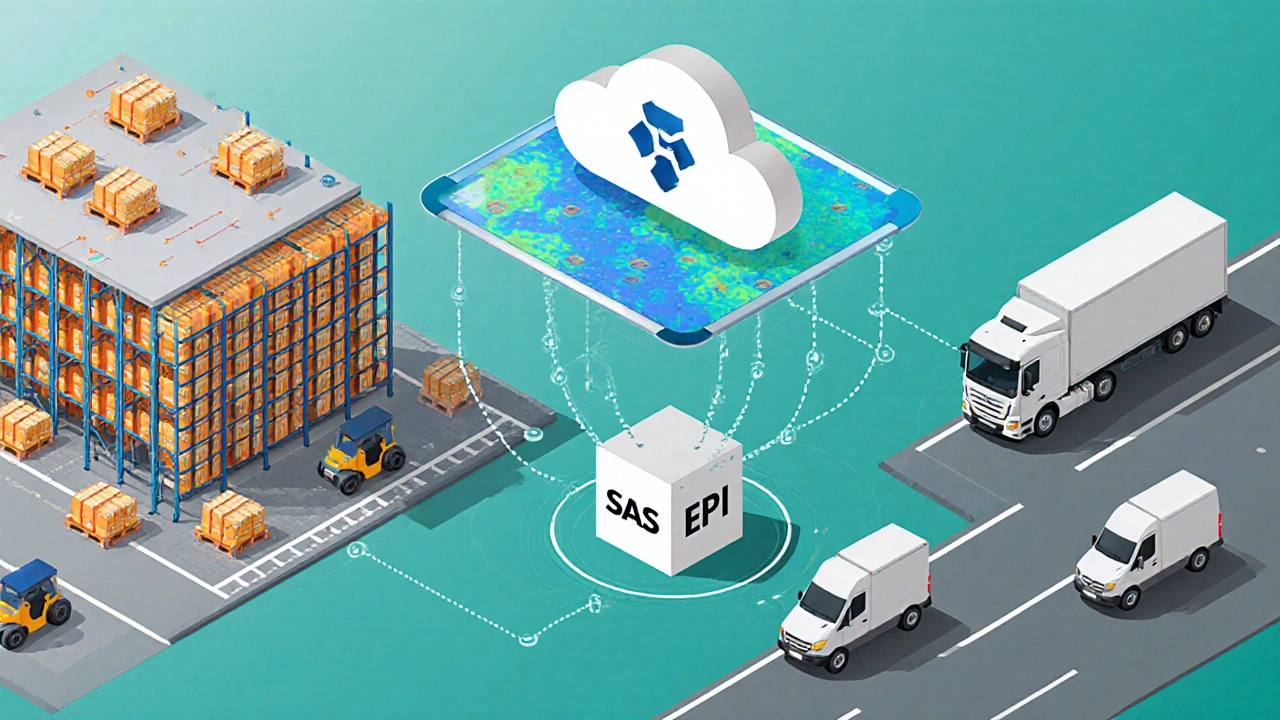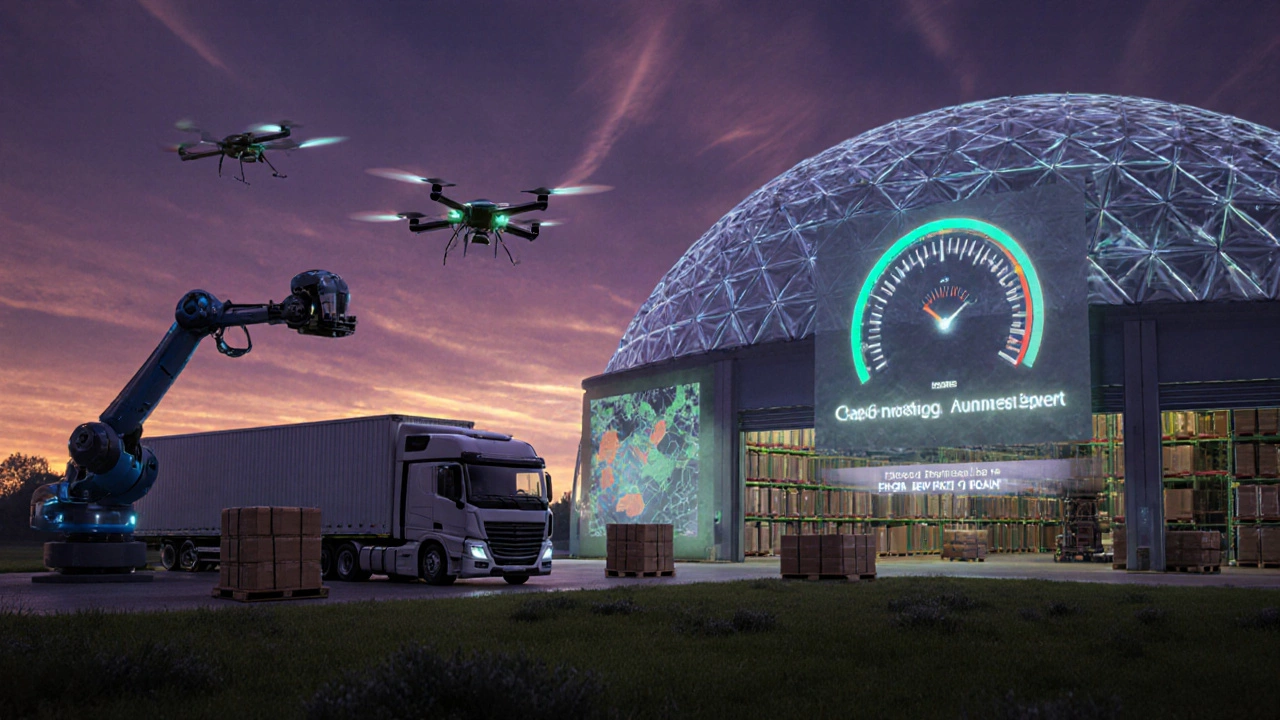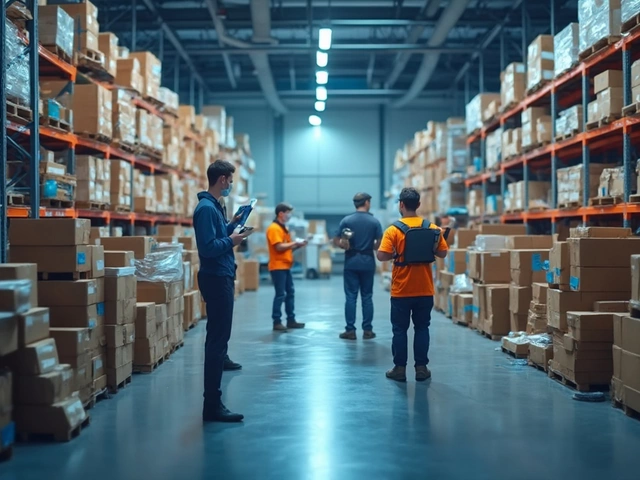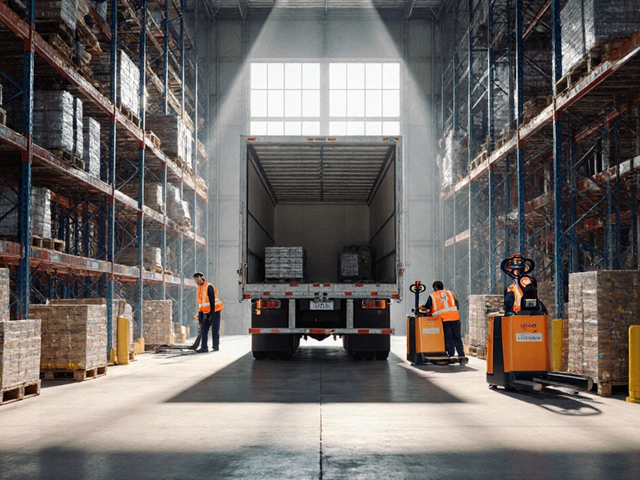LMS Cost Savings Calculator
Calculate Your Potential Savings
Quick Takeaways
- A Logistics Management System (LMS) is a software platform that coordinates, tracks, and optimizes the flow of goods from suppliers to customers.
- Key modules include order processing, inventory control, warehouse operations, and transportation planning.
- Modern LMSes leverage cloud computing, AI‑driven analytics, and real‑time RFID tracking for end‑to‑end supply‑chain visibility.
- Choosing the right LMS can cut operating costs by 15‑30% and improve on‑time delivery rates.
- Integration via APIs ensures the LMS talks to ERP, CRM, and e‑commerce platforms without manual data entry.
When a company talks about a Logistics Management System is a software platform that coordinates, tracks, and optimizes the movement of goods from suppliers to customers, the conversation usually jumps straight to speed, cost, and customer satisfaction. In plain terms, an LMS is the digital nervous system of your supply chain - it knows where every pallet is, which truck will carry it next, and whether inventory levels are safe for the next sales surge.
Why does this matter now? By 2025, more than 70% of midsize retailers have migrated at least part of their logistics to the cloud, and AI‑enhanced routing is shaving an average of 2‑3 hours off delivery times. If you’re still using spreadsheets or siloed tools, you’re likely paying for hidden inefficiencies.
How an LMS Fits Inside the Bigger Supply‑Chain Picture
Think of a supply chain as a chain of linked processes: sourcing, manufacturing, warehousing, transportation, and finally order fulfillment. Each link traditionally ran its own software - a Warehouse Management System (WMS) in the warehouse, a Transportation Management System (TMS) on the road, and a basic order entry tool in sales. A Warehouse Management System is software that controls inbound and outbound stock movements, optimizes storage locations, and supports picking strategies focuses on the fourth link, while a Transportation Management System is a tool that plans routes, consolidates loads, and manages carrier contracts tackles the fifth.
An LMS sits on top of these specialized tools, consolidating data and providing a single pane of glass. It pulls order details from the ERP, inventory numbers from the WMS, carrier rates from the TMS, and then orchestrates everything so a single order flows smoothly from purchase to doorstep.
Core Modules Every Good LMS Should Have
| Module | Primary Function | Typical KPI Impact |
|---|---|---|
| Order Management | Capture, validate, and route sales orders | Order‑to‑cash cycle time ↓ 20% |
| Inventory Management | Track stock levels, forecast demand, trigger replenishment | Stock‑outs ↓ 30% |
| Warehouse Operations | Direct receiving, put‑away, picking, packing | Pick efficiency ↑ 15% |
| Transportation Planning | Route optimisation, carrier selection, load consolidation | Transport cost per unit ↓ 12% |
| Analytics & Reporting | Dashboards, predictive alerts, performance benchmarks | Decision‑making speed ↑ 40% |
| Integration Layer (APIs) | Connect to ERP, CRM, e‑commerce, and external carriers | Manual data entry errors ↓ 90% |
Each module is a building block, but the real power comes from how they talk to each other. When a new order lands in the Order Management module, the LMS instantly checks inventory, allocates stock in the Warehouse Management System, and suggests the most cost‑effective carrier through the Transportation module. The whole process happens without a human opening a separate spreadsheet.
Technology Enablers: Cloud, AI, and RFID
Modern LMS platforms are no longer on‑premise monoliths. Cloud Computing is the delivery of computing services-including servers, storage, databases, networking, software-over the internet gives you scalability on demand and automatic updates. You can add a new warehouse or launch a seasonal promotion without buying new hardware.
Artificial intelligence adds another layer. AI‑driven Analytics is software that processes large data sets, identifies patterns, and predicts outcomes such as demand spikes or optimal routes can forecast inventory needs weeks ahead, reducing safety stock while maintaining service levels. In routing, AI evaluates traffic, weather, and carrier performance to suggest the most reliable path, often cutting fuel consumption by 5‑10%.
Visibility at the pallet level is now commonplace thanks to RFID Tracking is a technology that uses radio waves to automatically identify and track tags attached to objects. Instead of scanning barcodes at each dock, a single reader can capture the location of dozens of pallets in real time, feeding the LMS a live map of where every item sits inside a warehouse or on a truck.
Benefits That Matter to Your Bottom Line
Adopting a robust LMS isn’t just an IT project; it directly affects profitability. Here are the most compelling numbers from recent industry surveys:
- Operating costs drop 15‑30% due to reduced manual labour and better carrier negotiations.
- On‑time delivery improves by 10‑20% when routing decisions are data‑driven.
- Inventory carrying costs shrink 12‑18% because safety stock can be calibrated more precisely.
- Customer satisfaction scores climb 8‑12 points as order status becomes visible to the end‑user via portal integrations.
All these gains stem from a single source: the ability to see the whole supply chain in one system and act instantly.

Choosing the Right LMS for Your Business
Not every LMS fits every operation. Use these three decision filters to narrow the field:
- Scale & Complexity: Small e‑commerce sellers may only need core order and inventory modules, while a multinational retailer will require multi‑site warehouse management, multi‑modal transportation, and global compliance features.
- Integration Landscape: List the systems you already run (ERP, CRM, marketplace platforms). A good LMS offers pre‑built connectors or open APIs. If your ERP is SAP, look for a certified SAP‑LMS integration.
- Deployment Preference: Cloud SaaS delivers rapid rollout and lower upfront cost. On‑premise might be required for strict data‑sovereignty rules in certain regions.
Once you’ve answered these, compare vendors on three tangible criteria:
- Functionality Coverage: Does the solution cover every module listed in the table above?
- Scalability: Can you add users, locations, and transaction volume without a performance dip?
- Support & Community: Are there active user forums, dedicated support SLAs, and regular feature releases?
Remember, the cheapest option isn’t always the most cost‑effective in the long run. Factor in implementation time, training, and potential hidden costs like custom integration work.
Implementation Tips and Common Pitfalls
Roll‑out a logistics management system in phases, not all at once. Here’s a proven playbook:
- Pilot a single warehouse: Configure core modules, run a few weeks of live orders, and measure KPIs.
- Iterate based on feedback: Tweak picking rules, adjust alert thresholds, and fine‑tune carrier contracts.
- Extend to additional sites: Replicate the configuration, but respect regional differences (e.g., tax rules, carrier availability).
- Activate advanced analytics: Once data volume is sufficient, enable AI forecasts and predictive alerts.
Common stumbling blocks include:
- Skipping data cleansing - dirty master data leads to duplicate SKUs and wrong shipments.
- Under‑training staff - the system is only as good as the people who use it daily.
- Neglecting change management - stakeholders need to understand why the new process matters.
Address these early, and you’ll avoid costly re‑work later.
Future Trends Shaping LMS Evolution
What will logistics software look like in the next five years? Here are three forces to watch:
- Hyper‑Automation: Robotic process automation (RPA) will handle routine exceptions (e.g., auto‑reorder when stock falls below a threshold).
- Edge Computing: Processing data at the warehouse door or inside delivery trucks will reduce latency for real‑time decisions.
- Sustainability Metrics: LMSes will embed carbon‑footprint calculations, helping companies meet ESG goals and offer greener shipping options to customers.
Staying ahead means picking a platform that’s built to integrate these emerging capabilities without a full replacement.
Bottom Line
In short, a logistics management system is the digital hub that unifies order processing, inventory control, warehouse operations, and transportation planning-all under one roof. By leveraging cloud infrastructure, AI analytics, and real‑time RFID data, modern LMS solutions deliver measurable cost savings, faster deliveries, and higher customer satisfaction. Choose a system that matches your scale, integrates with existing tools, and supports future innovations, and you’ll turn logistics from a cost center into a competitive advantage.

What types of businesses need a logistics management system?
Any organization that moves physical goods-retailers, manufacturers, 3PL providers, and even large e‑commerce shops-benefits from an LMS. The key is having enough order volume or complexity to justify automating processes that would otherwise be manual.
Is a cloud‑based LMS safer than an on‑premise solution?
Cloud LMS providers invest heavily in security certifications (ISO 27001, SOC‑2) and disaster recovery that most midsize firms can’t afford on‑premise. However, if regulatory rules demand data residency, an on‑premise or hybrid model may still be required.
How long does it take to implement an LMS?
A typical phased rollout-pilot, iterate, expand-takes 3‑6 months for a single site and up to a year for a global network, depending on data migration complexity and staff training needs.
Can an LMS integrate with existing ERP systems?
Yes. Most modern LMSes offer RESTful APIs, pre‑built connectors for SAP, Oracle, Microsoft Dynamics, and other major ERPs, allowing seamless data flow without double entry.
What is the ROI I can expect from an LMS?
A well‑implemented LMS typically delivers a 15‑30% reduction in logistics operating costs within the first 12 months, plus improvements in delivery reliability and inventory turnover that boost revenue.





